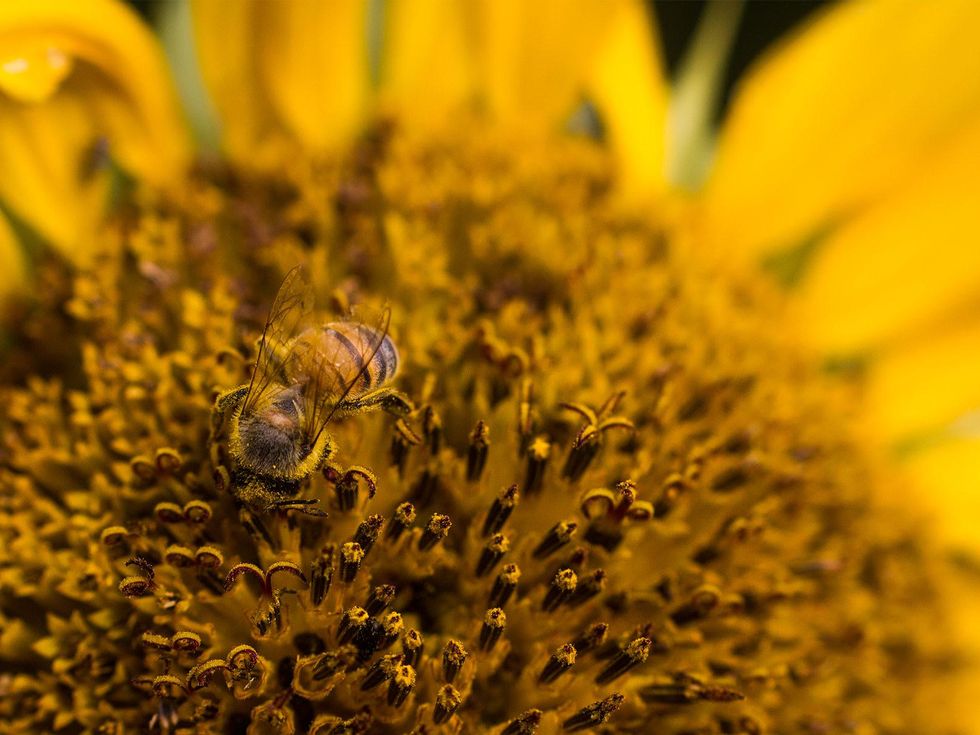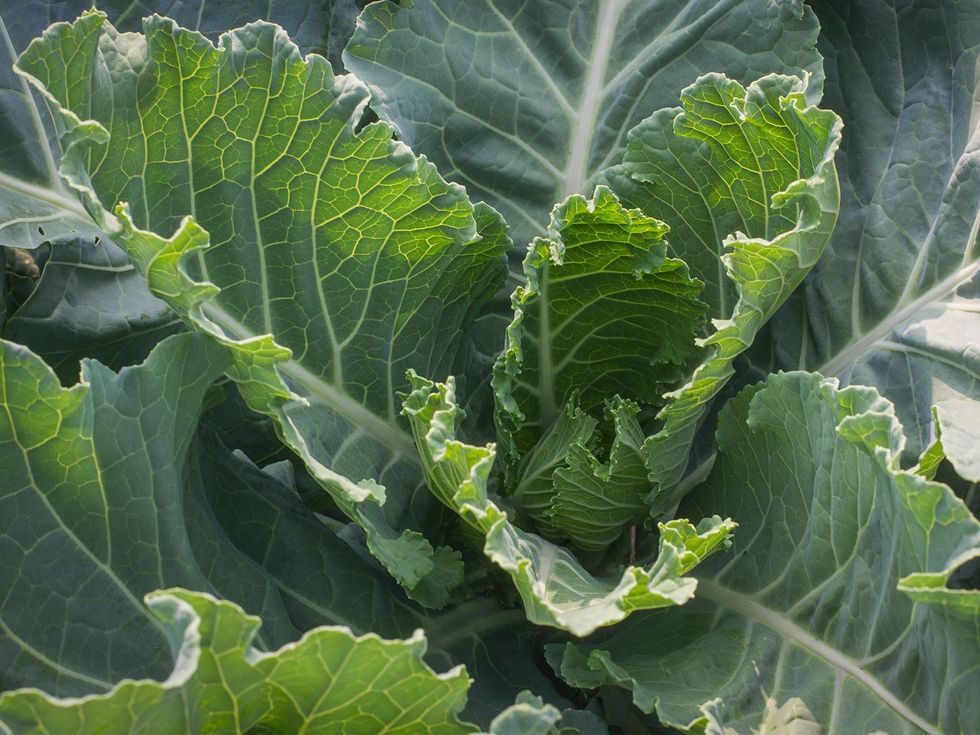The Farmer Diaries
North Texas organic farmer on winners and losers so far this year
From the day we enter first grade, we learn that we can pass or fail, and failure is not an option. This may be a good lesson for the corporate world but not the farm. Sure, we can water and fertilize our gardens, but the outcome is subject to a sort of natural lottery. Some crops will be winners, but others will be losers, no matter how hard we work.
The Hinsley Garden of 2013 is no exception. Here's my progress report:
THE WINNERS
Crops that have either started yielding or are only days away from doing so.
Wheat. I used to overlook grains. Those who grow wheat seem to grow it in huge amounts, so I assumed it wasn't worth the trouble for someone like me who isn't a land baron. But I'm giving it a try by growing a 32-square-foot test plot.
It's non-GMO, tall, unaffected by pests and full of ripening grain. So far, it's looking like a winner for a larger plot next year. As for yield, Sara Pizer, author of Homegrown Whole Grains, shows how to grow enough wheat for a year's worth of bread in a space no larger than a typical two-car garage.
Tomatoes. I have 15 varieties growing, such as yellow pear; cherry; and my favorite arid producers, Texas wild and Nichols. All plants are looking lush and green with maturing fruit.
Potatoes. Growing in large, plastic containers. Container-grown new potatoes are easier to harvest than potatoes grown in North Texas' black, clay soil. The container method failed when I tried it last year. So far this year, I can see the new potatoes just under the surface of the soil and looking delicious. Sometimes you lose the crop lottery; sometimes you win.
Carrots. I have an acquaintance who was so traumatized by a carrot crop failure when he was a child that he never attempted to grow them again. My word to you, sir: Give them another chance. They are effortless. My first success with carrots was in my test plot last year; this year, I expanded their allotted area. I may never buy store-bought carrots again!
Sweet peas. I once skipped school to plant these. Later that day, my best friend called to ask if I had heard that the space shuttle had exploded on takeoff. For all future scheduled launches, I made sure not to plant sweet peas on the same day. Wando is best for growing here, and the home improvement stores always sell the wrong variety.
Greens. Swiss chard, kale and collard greens are all doing well. In fact, I netted $75 in sales of my surplus a couple of weeks ago. Not quitting my day job yet, but it was a nice infusion of pocket money.
Sunflowers. They're bursting forth with beautiful flowers to be followed by fresh, organic bird seed.
Onions and garlic. One-and-a-half raised beds will supply all my needs for about a year. (That's an onion and garlic clove a week.) The onions growing in the field will amount to about a car payment or two, if I can keep my father from giving them away.
Beets. Easy to grow. Nothing to show off here.
Cilantro. It's growing from seed planted this year and from seed that fell from mature plants last year, when it's known as coriander. As easy to grow as a weed. No one should ever have to buy cilantro – NO ONE!
Borage. I always thought that borage would be hard to grow. Man, was I wrong! The flowers are edible and indeed taste like cucumbers, just like the garden books say.
THE LOSERS
Crops that will not yield this year.
Lettuce. It was looking beautiful, then it bolted while caterpillars munched it down to nothing. What I've been able to salvage tastes delicious, but I have to put lettuce down as a failure.
Amaranth. Never even sprouted.
Sorghum. Nope, not even a sprout.
Basil. Success with basil in the past pushed me to expand my space for it this year; oh, the hubris. I planted lettuce basil, purple basil, classic basil, lime and lemon basil. Only one or two seeds each even sprouted — again, the lottery.
Fortunately, I had more success with the same varieties that I started indoors for transplanting, so not all is lost. I'll see whether or not these transplants save the day.
TOO EARLY TO TELL
These crops could pass or fail. I'm keeping my fingers crossed.
Okra. I may have planted okra too early, lulled into a false security by March's early warmth. None of it has sprouted. I replanted it last week. We'll see.
Beans. Planted in early March, pinto beans, soy beans and black-eyed peas all sprouted, then just sat in the soil at about two inches tall instead of flourishing into bushy plants full of bean pods. This was a clear sign of poor rainfall, and the fields are too large to irrigate. Maybe rainfall in May will shape them up.
Watermelon. Sugar Baby watermelons fulfilled all my watermelon desires last year. This year, the vines are growing slowly with no sign of flowering.
Cantaloupe. The vines are robust, but I've heard this tune before. You never know if it's a good year for cantaloupe until you're tired of eating them.
Squash. They look nice, but some have only just now sprouted, while others are becoming mature bushes. Squash can look outstanding one day, like the picture on the seed packet, and be dead on the ground the next. So, with squash and zucchini, success is only evident in hindsight.
Cotton. Not a food crop but interesting to grow with beautiful hibiscus-like flowers. I just want to be able to grow it for maybe phase two of my self-sufficiency attempt. It grew well last year, but this year, if it doesn't sprout in the next week, it will go down as a failure.
Peppers. Sweet green peppers, habanero, jalepeño and Hungarian hot wax are all planted, growing slowly and nowhere near bearing fruit. I've seen friends posting photos of their pepper harvests on Facebook. I need to learn their secret.
Cucumbers. The sprouts look nice. Sprouts are not cucumbers.
Chives. Supposedly chives are easy to grow and good for getting children interested in gardening, sort of a sure bet for them. Apparently, I need a child. I see a few sprouts that haven't done much yet. Maybe the heat will help them as summer approaches.
Pole beans. They're lush and green. The proof is in the bean pods, which have yet to appear.
FUTURE BETS
In addition to annual crops, I've planted mulberry trees and native plum trees, but they are several years from bearing fruit. There are also native blackberry plants growing wild on the land, and their fruit is delicious and just about to ripen for this year. But we leave it for the wildlife except for a few handfuls.
We also have some fig trees that are slowly growing along with pear trees. Drought has delayed their maturity, but they are surviving, which itself is a promising sign.
Crop losers aside, my declaration of food independence and dedication to opt out of industrialized agriculture is proceeding well, so long as I eat what's available from the garden and wait on whatever will be available soon. There's a certain appreciation that I've gained for tomatoes and cucumbers and everything else by not always having access to them. Eating what's in season when it's in season does that.
Still, I'll always depend on the market to bring me organic avocados and bananas and a few other essentials that can't grow in North Texas. But having a source for my own organic, sustainably produced fruits and vegetables is very satisfying. One day, it may be my main source of income, even if for now it seems like a gamble.






